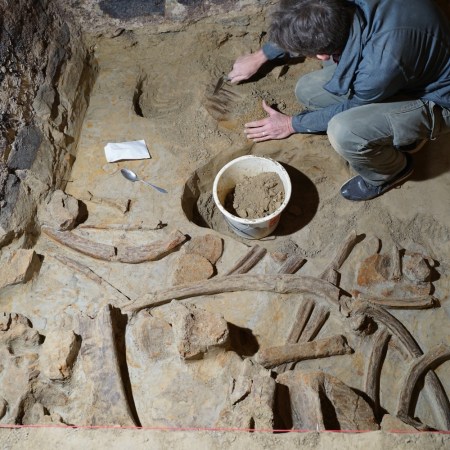For almost a million years, one of the ancestors of modern humans walked the earth in what is now eastern Africa. That would be Australopithecus afarensis — the human ancestors written about in the acclaimed book Lucy: The Beginnings of Humankind.
While it’s been decades since certain traces of the aforementioned ancestor were uncovered in (among other spaces) Laetoli, Tanzania, a new spin on old evidence suggests that they weren’t the only ancestor to modern humans occupying that space nearly 3.7 million years ago.
As CNN recently reported, a discovery made in 1978 is at the heart of this new theory. Footprints of human ancestors dating back to 3.66 million years ago were discovered at various sites in Laetoli. Some were believed to be Australopithecus afarensis; others were initially attributed to a very different kind of mammal — namely, bears. But with more time and more consideration, a group of scientists now believe that they were produced by something very different.
Nature recently published a paper titled Footprint evidence of early hominin locomotor diversity at Laetoli, Tanzania. The paper’s authors revisited the supposedly ursine footprints using “3D photogrammetry and laser scanning.” Their findings? “[T]hey resemble those of hominins more than ursids,” the paper’s authors wrote. “In fact, the narrow step width corroborates the original interpretation of a small, cross-stepping bipedal hominin.”
As Smithsonian Magazine notes, the implications of this paper are that multiple human ancestors were living in the same region at the same time — all of which gives those of us living in 2021 a slightly clearer picture of what the world looked like millions of years before.
Thanks for reading InsideHook. Sign up for our daily newsletter and be in the know.


















